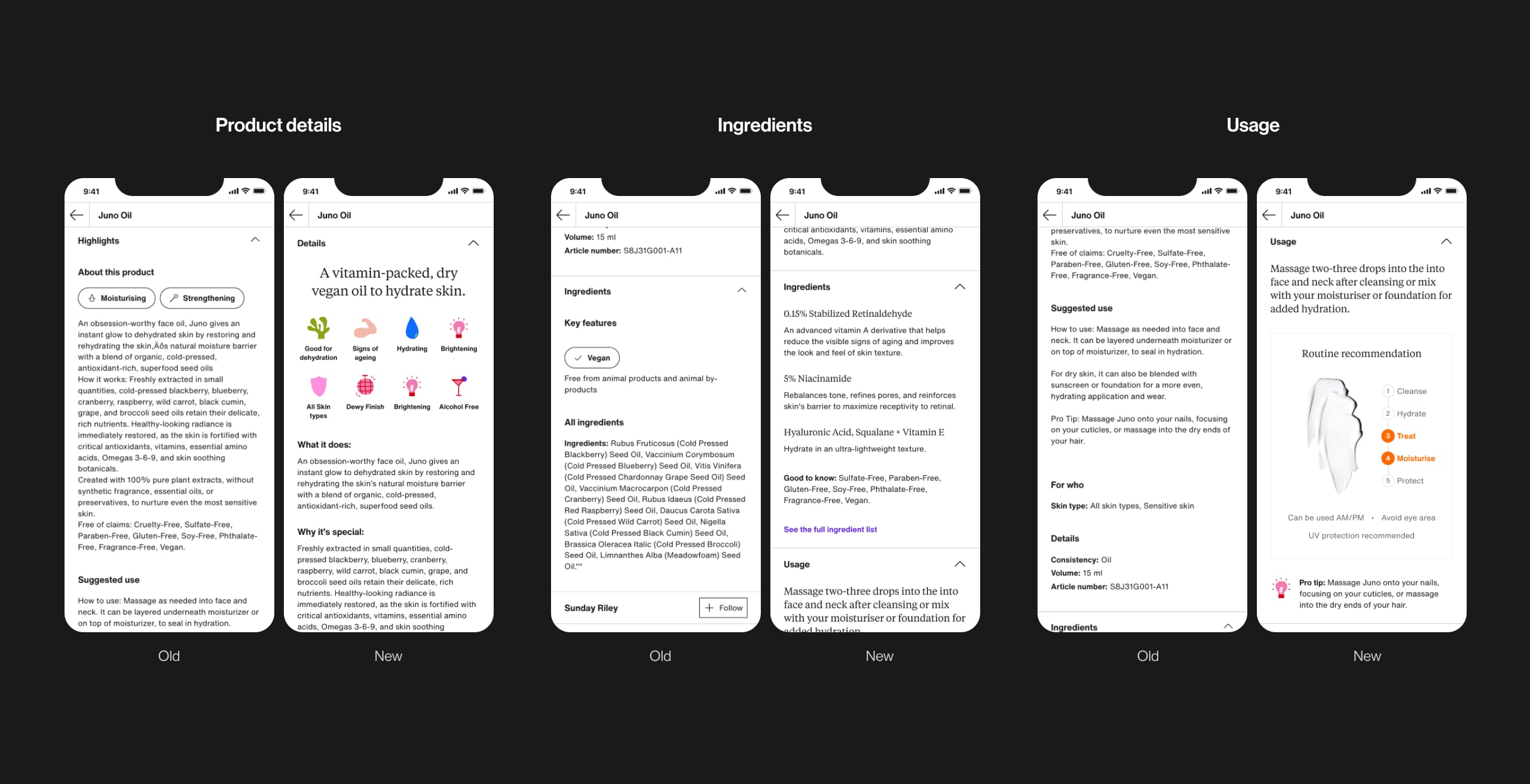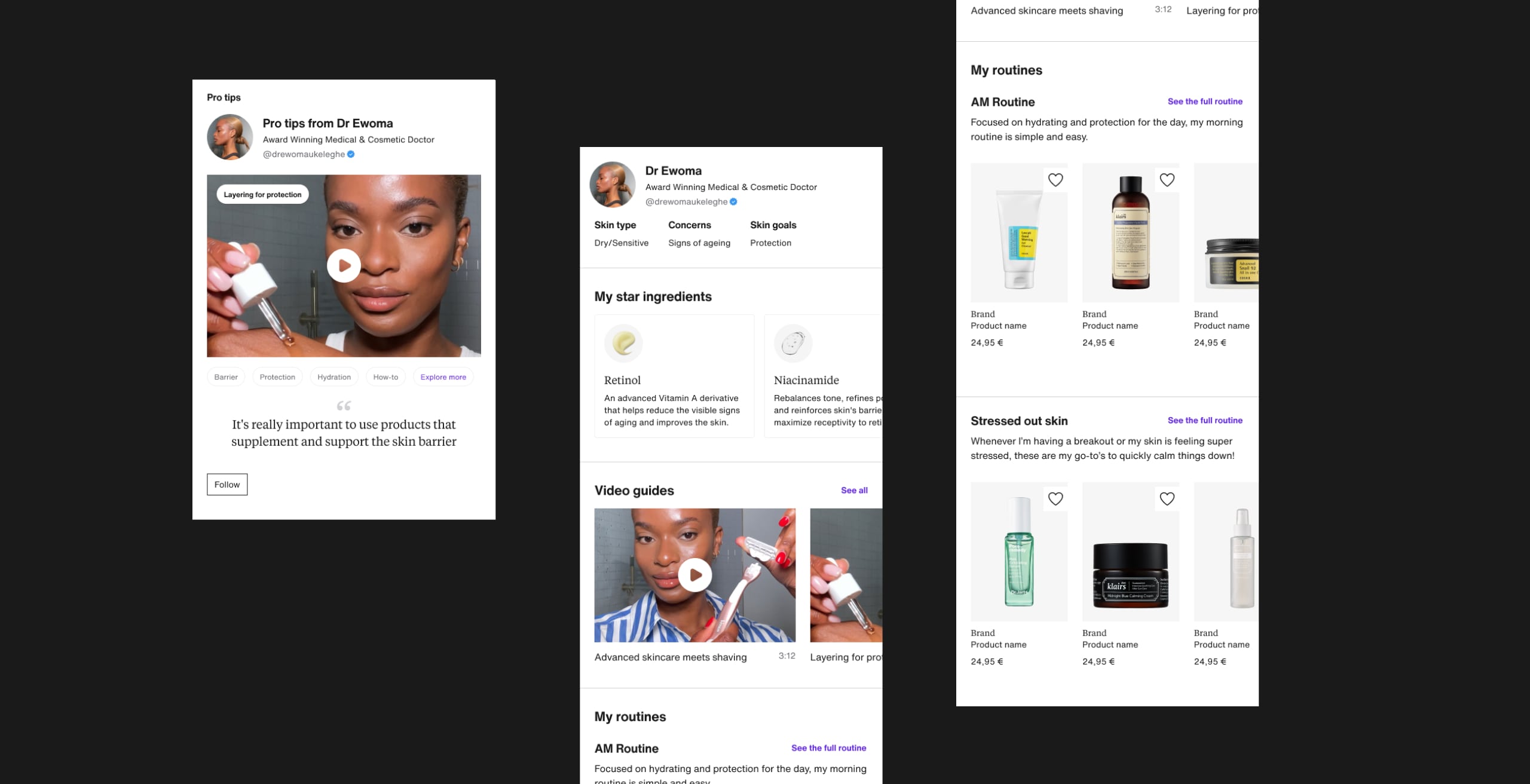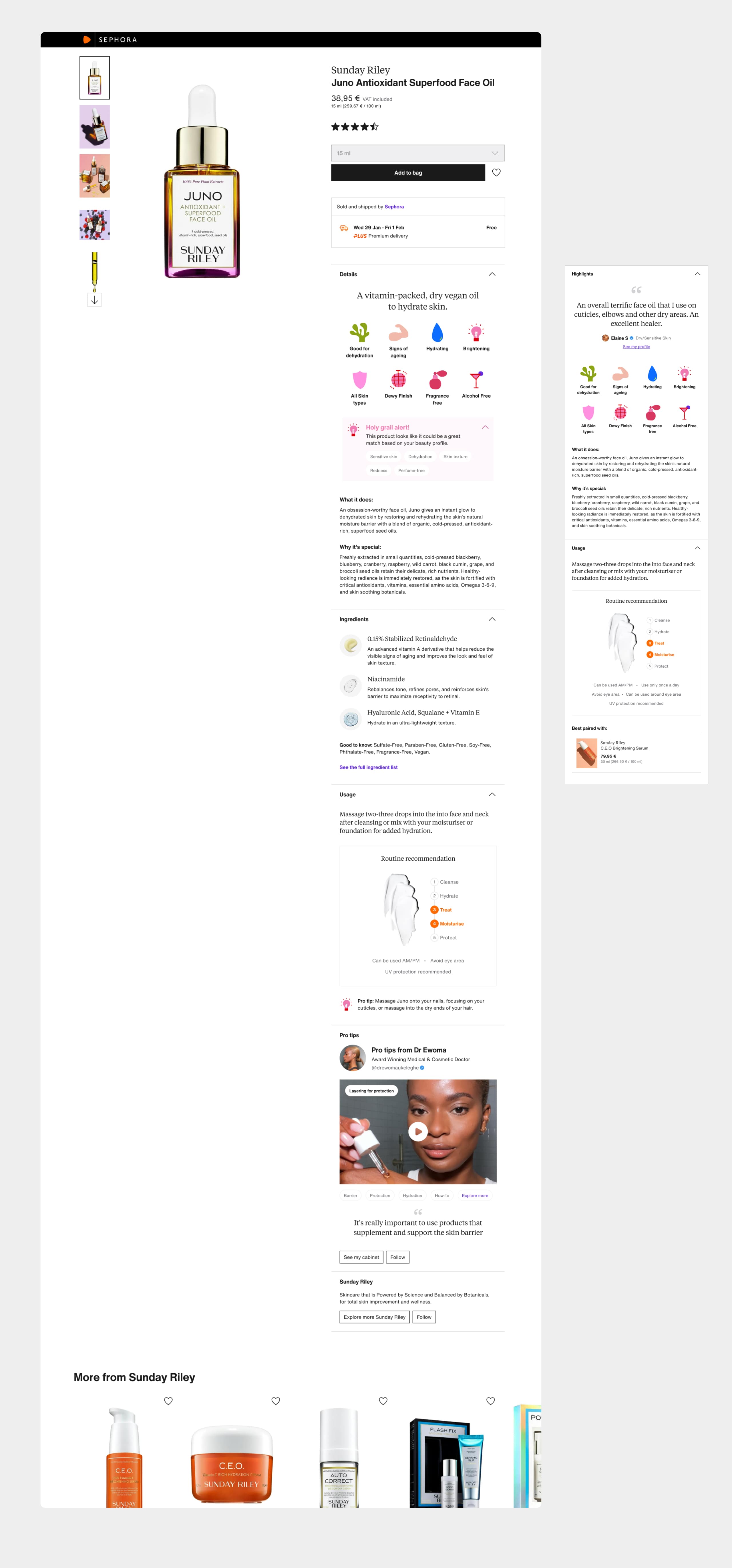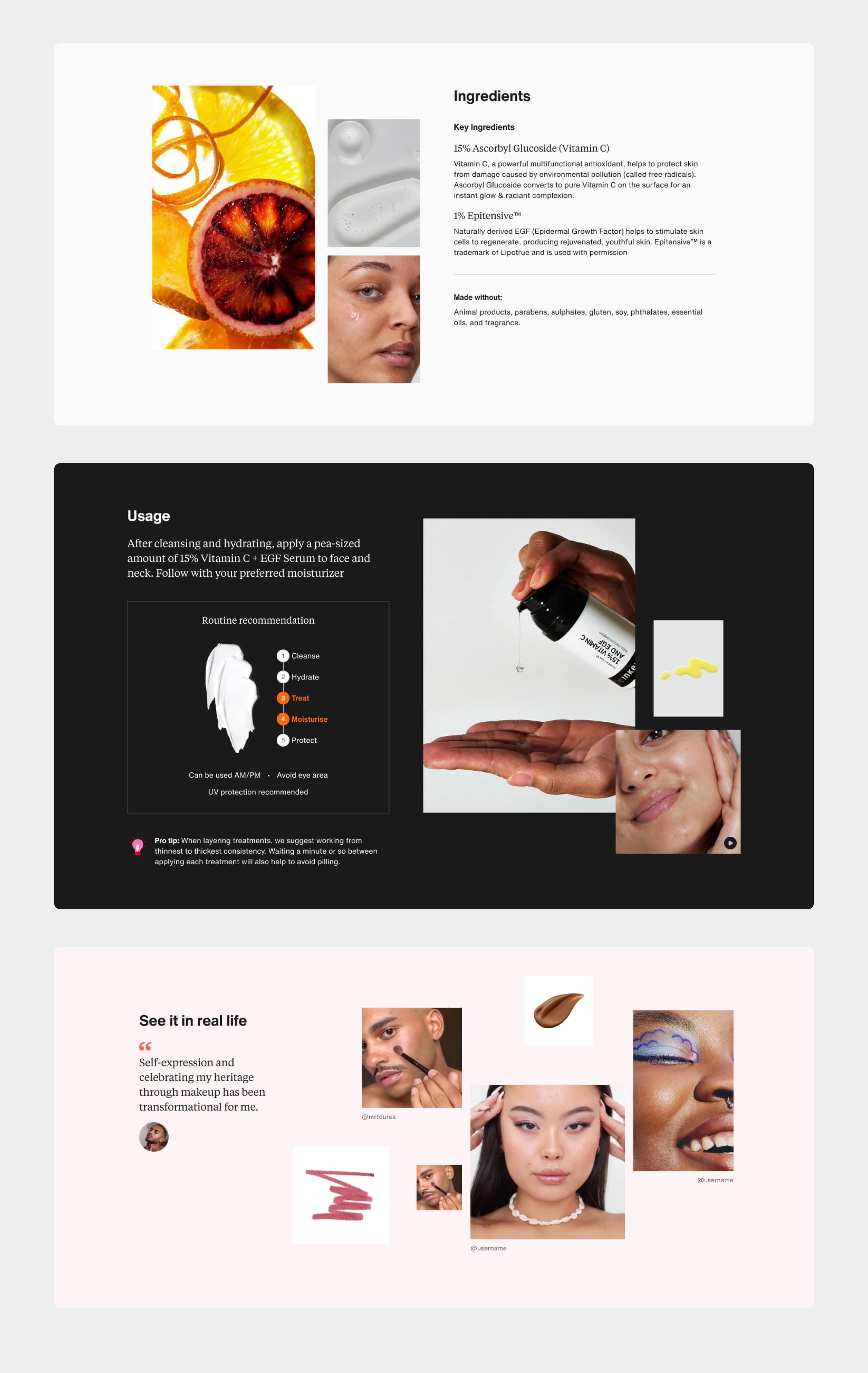Zalando Beauty
Since launching their Beauty offering, Zalando’s broad beauty assortment has grown to over 10,000 products from more than 250 brands, from innovative skincare products to refreshing new makeup trends. Primarily as a fashion retailer, the problem that is now upon Zalando is meeting the needs of a new type of shopper—the beauty customer. Our team's goal was to identify the most relevant information needs of skincare shoppers, ensure that our product database had the ability to capture these needs and present this information through an updated interface on a new refined beauty product page.
Client
Zalando
Role
Product design, user research, information architecture
Year
2022
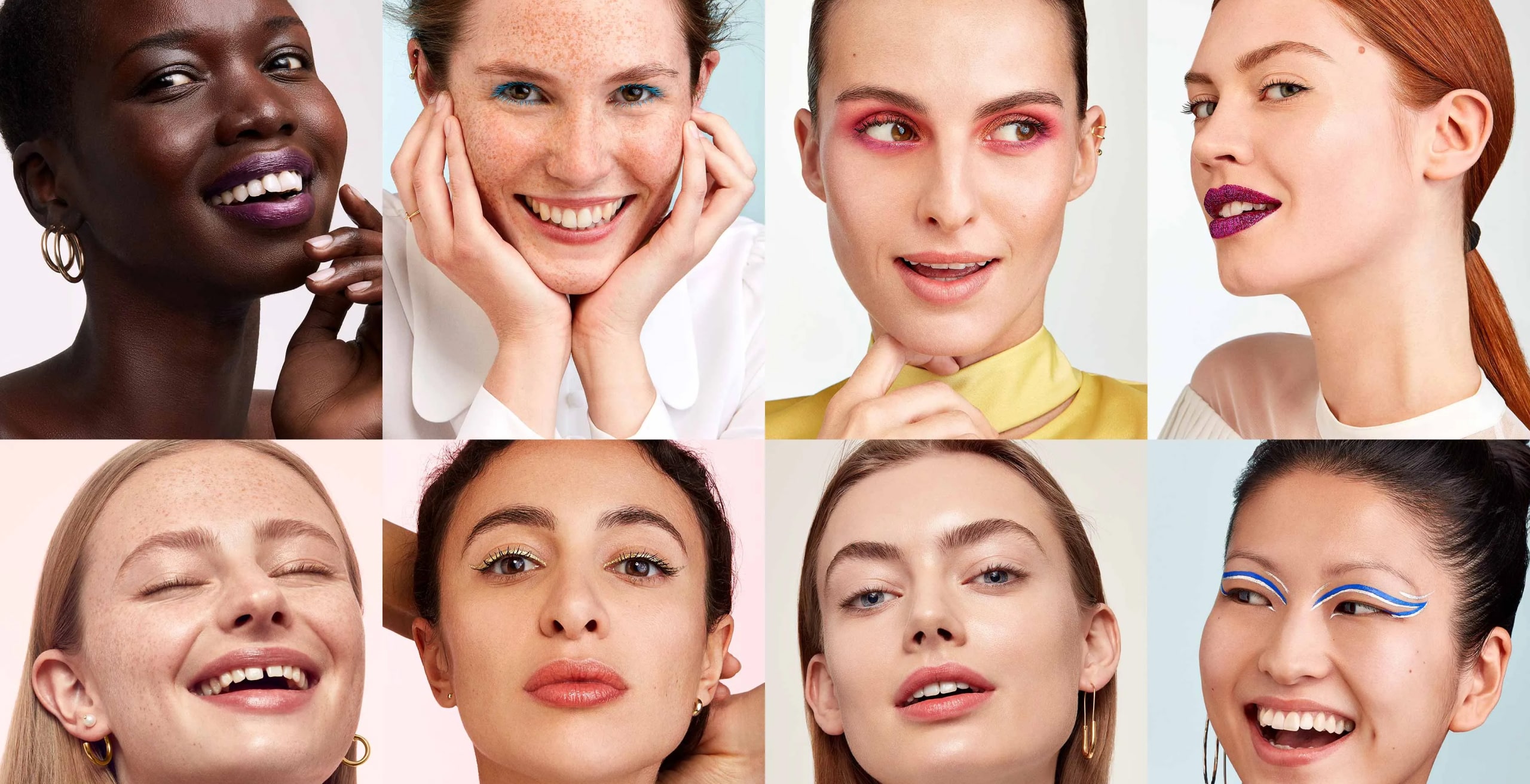
A huge challenge that beauty shoppers face on Zalando.com is a lack of consistent product information. As beauty purchases are highly personal, we know that there are many important considerations people make in order to assess whether or not a beauty product is a good fit for them. The factors range from skin type, to potentially irritating ingredients, specific skin concerns a product may treat, where it is manufactured and so on. The challenge internally around meeting this high expectation of information comes down to a few key factors related to data. Data relevancy, correctness and completeness. Our primary aim was to improve the relevancy of data points first through understanding customer needs and aligning these with the attributes that are available in our system to tag beauty products. We saw this project as a test pilot that we could replicate for different categories in the future.
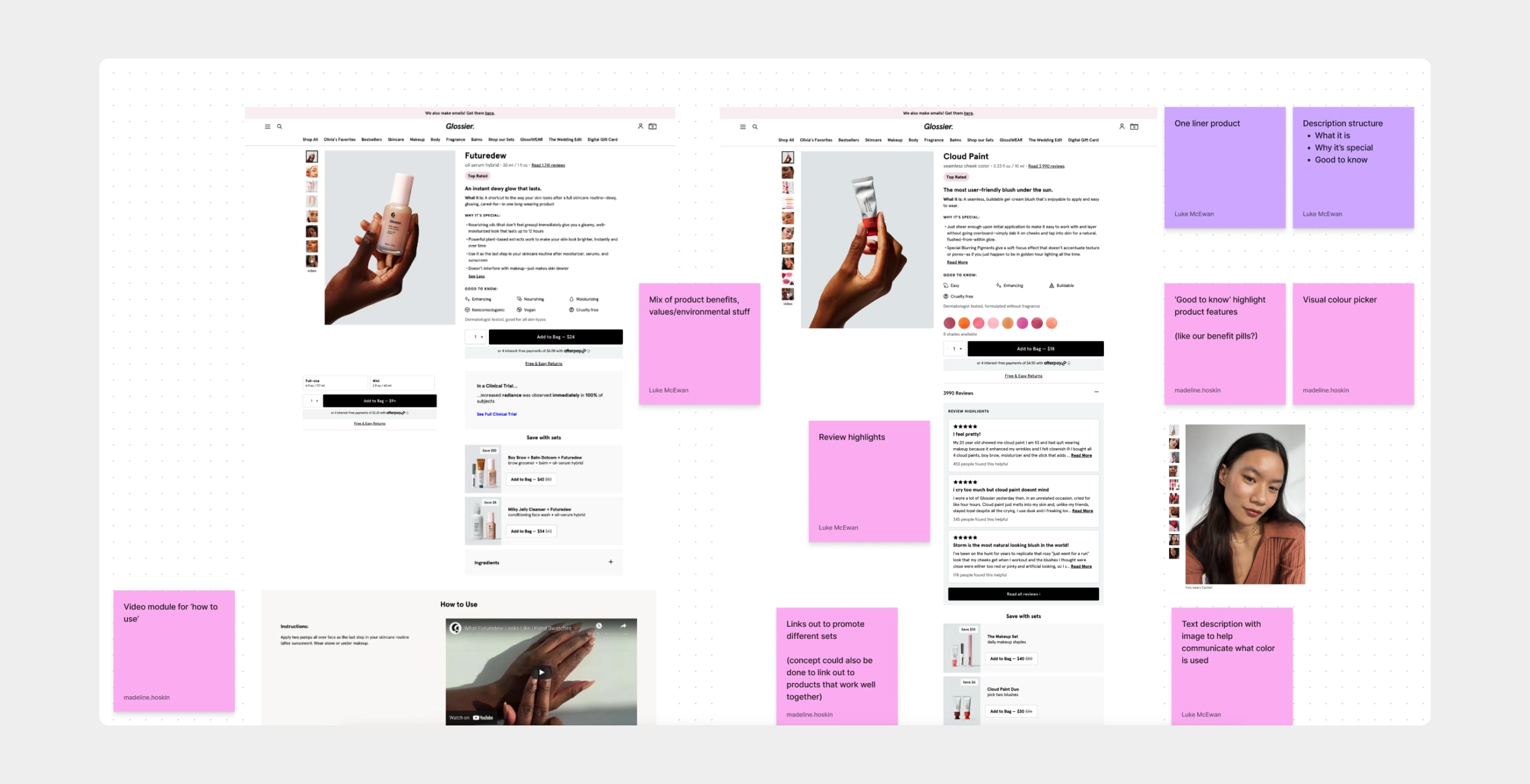
We first began by looking into our onsite qualitative data collection tools to gather some raw opinions of what customers are asking for in relation to product information. We then did a large benchmarking activity, scouring different beauty forums and websites for common questions that people would ask in relation to their skin needs. We clustered all this information and created a high level draft framework that would outline necessary information for all skincare products. We structured the framework into broad categories that could be flexible for different beauty categories and then further broke the framework down into more granular pieces of information, informed by the customers' questions we gathered. Naturally this was something that we needed to validate with real customers to understand if these needs we had identified were relevant—as well as prioritize these needs.
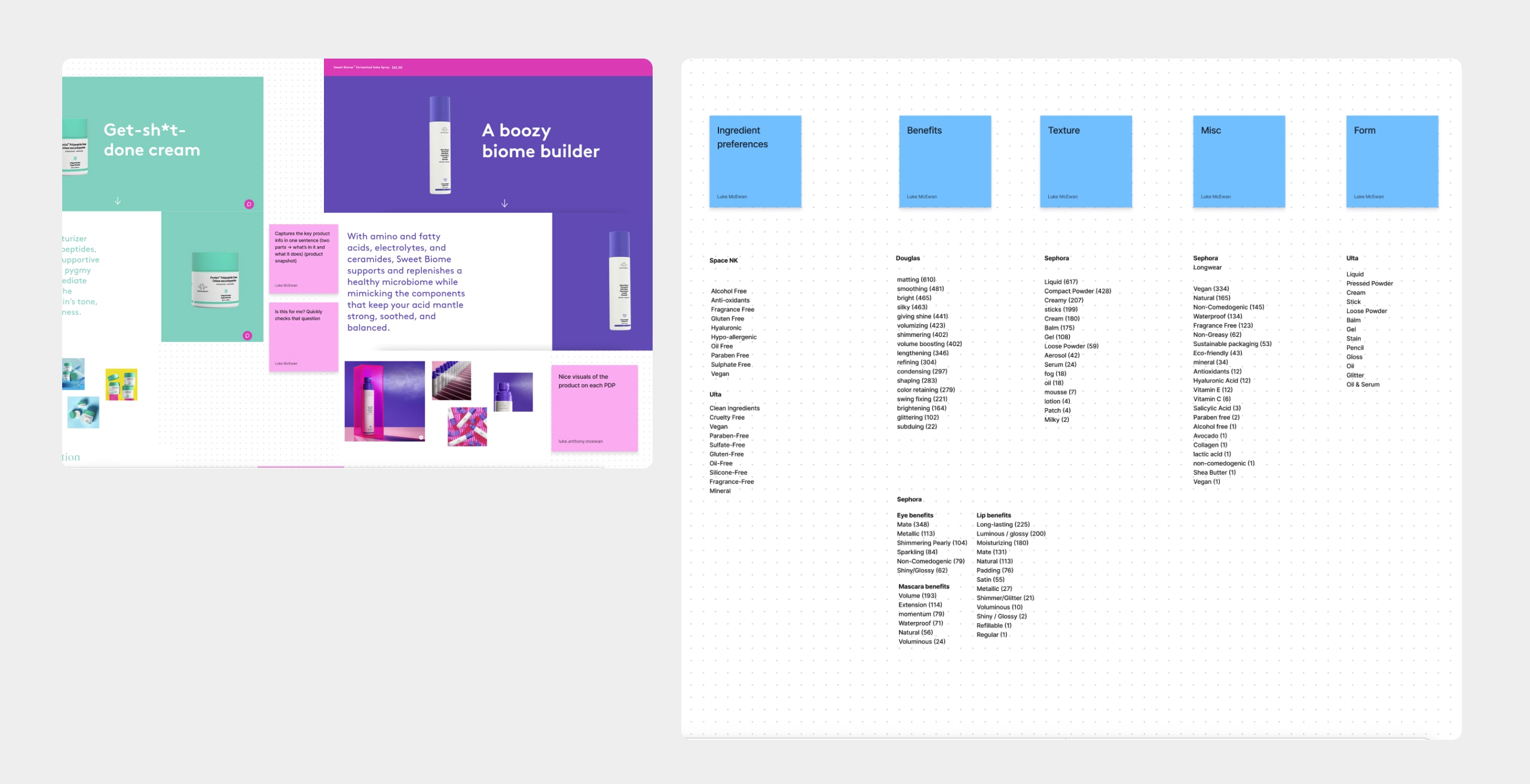
Our validation process was two fold—one with real customers, and one with a panel of experts. We ran an unmoderated survey with over 1000 participants in Germany, asking customers to tell us what was most to least important in multiple categories of skincare information. I worked on putting together the structure of the survey itself, in collaboration with the internal research team at Zalando, however this was a part that I was directly leading. Our expert panel was comprised of beauty buyers, beauty enthusiasts and an employee who works in the Zalando beauty mortar and pestle store in Berlin. This panel gave us some good insight into where the industry is heading with marketing around products and how companies are framing unique selling points. We also conducted the same customer survey with our experts to further validate the needs and their relevance.
We then moved into refining the attributes in our system—making updates to exisiting data structures and filling in gaps based on our newly identified needs. To help inform us with the right answers to these customer needs, we benchmarked terminology and language used across the industry. In collaboration with the copy writer on the team, we worked to bring all of these new values into the right brand language, aligning them to Zalando values also.
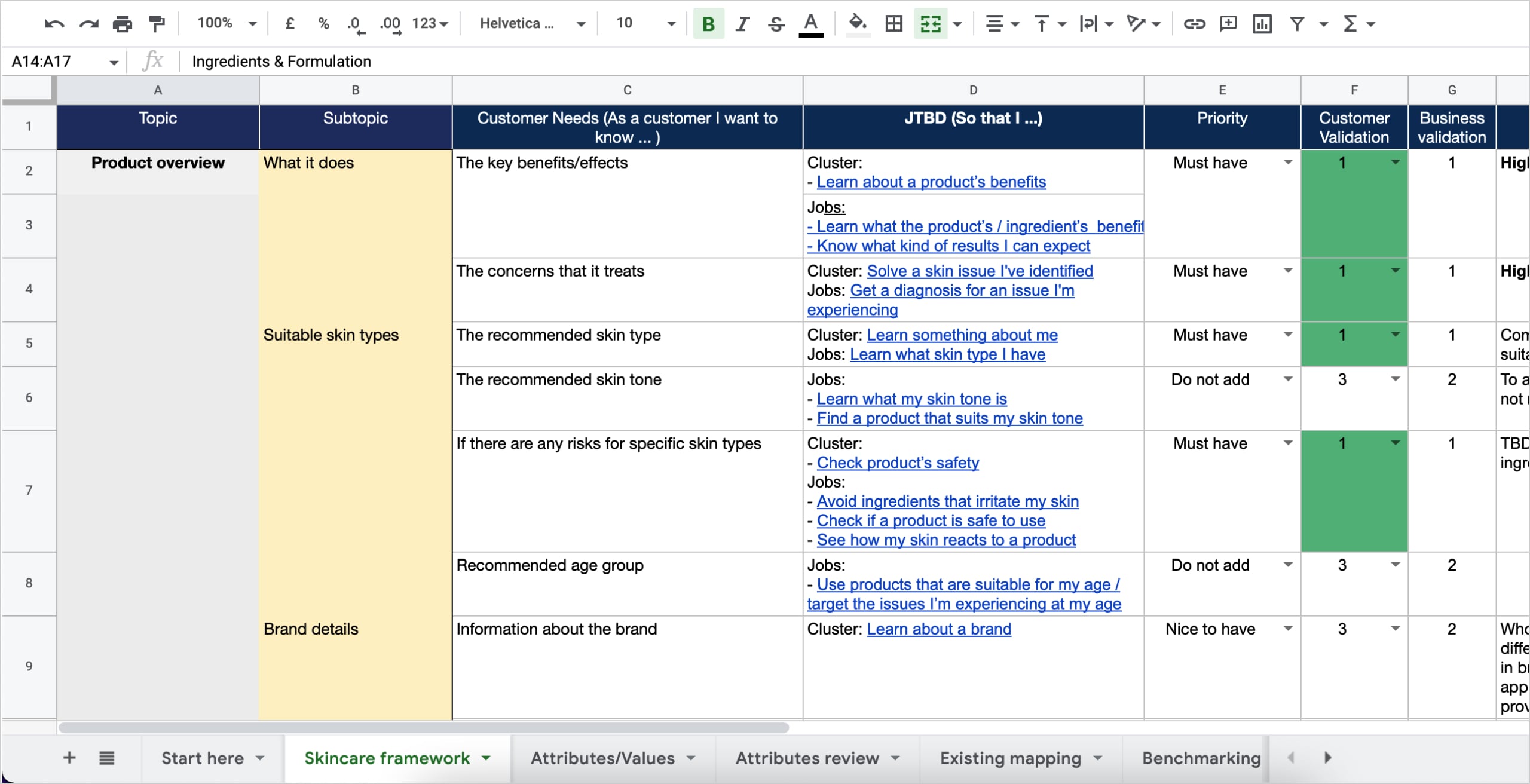
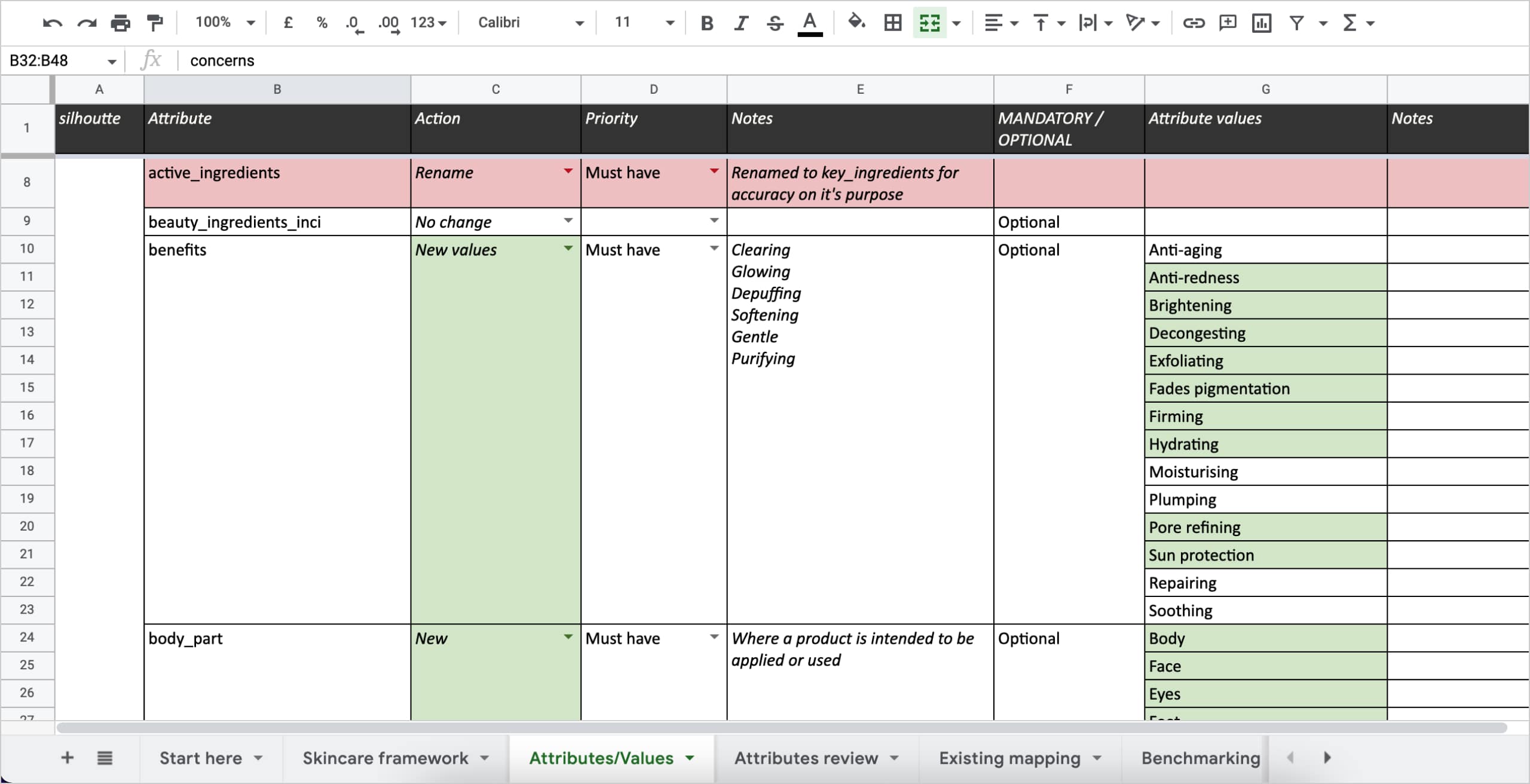
Once we had a strong understanding of our skincare customer’s needs, we began to workshop a new vision for a beauty product page. We dived into some previous work that the wider beauty team had done around the holistic beauty expeirence and associated ‘jobs to be done’. This was to help us get a wider view of what kind of challenges the entire beauty team was focusing on, and where we may be able to collaborate. We picked the most relevant jobs, and created some foundational principles to guide our design thinking throughout the design phase.
We explore various fidelities and ideas for the product page, ranging from quick wins—all the way to a vision piece that could serve as an elevated premium experience for brands who leant more into storytelling for their products. I spent a week in figma, diving deep into ways in which we could structure our narrative using existing UI patterns or slightly altering/reinventing things to fit these new uncovered needs. All of this work would then go into an official brief to be signed off by the heads of the beauty and a sponsor from the design leadership team—following from that it would then move into execution phase.
A caveat that comes with working in such a large company with many design teams, is that we knew this would be quite a complex collaborative piece of work. Early on in the process, we met with the design team responsible for the product page to align on our goals and share our work so far. We setup regular check-ins to leverage their expertise and get them to contribute throughout the journey.
